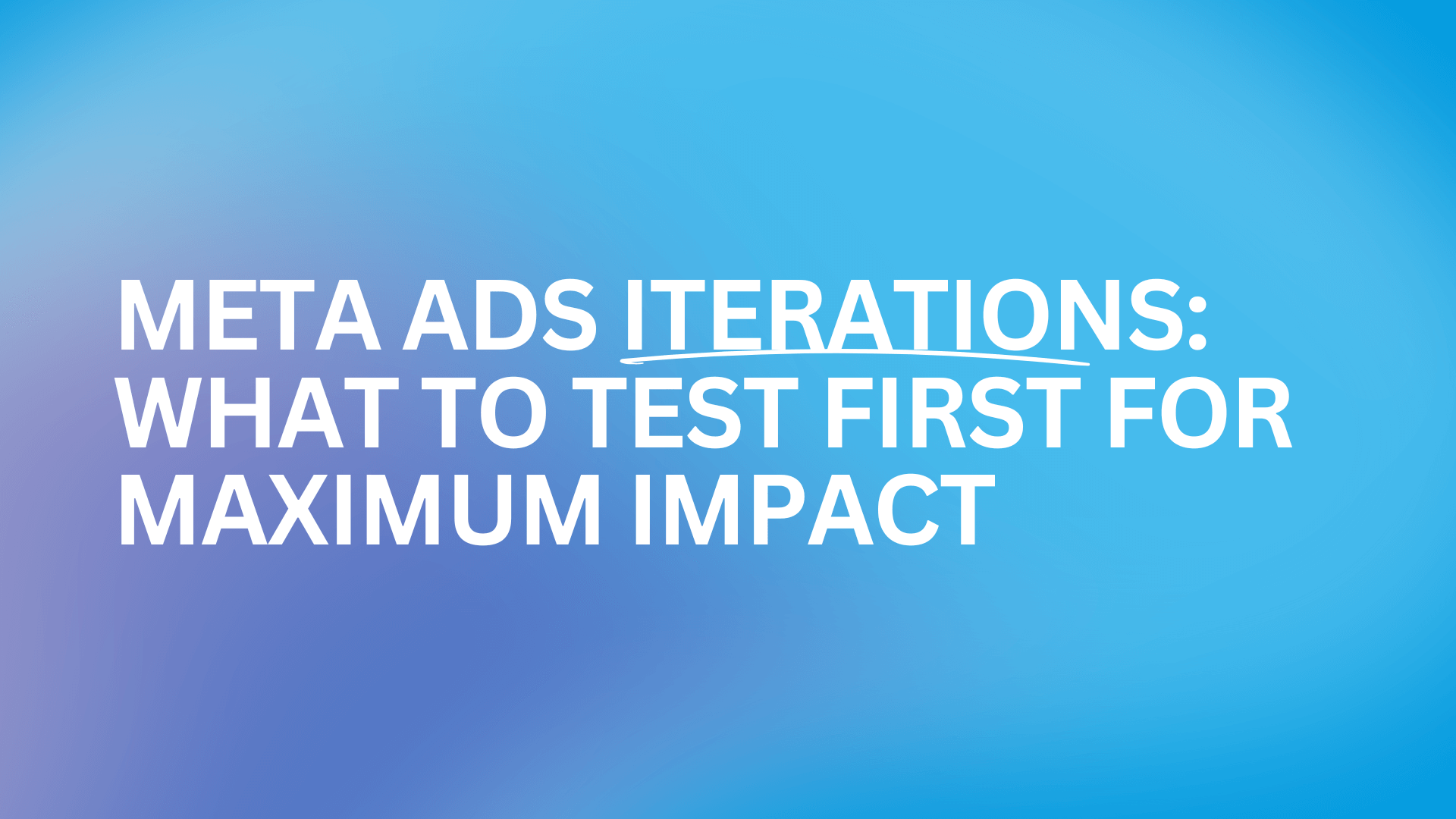Let’s cut to the chase: not all iterations are created equal. You’ve got limited time and budget, so why waste them on tweaks that barely move the needle? When it comes to Meta ads, the order in which you test and optimize can make or break your campaign’s success.
Here’s the ultimate guide to prioritizing your ad iterations—because no, changing the CTA button color isn’t the game-changer you think it is.
The Golden Rule of Meta Ads Iterations
Start where it matters. The biggest drivers of performance aren’t in the tiny details; they’re in the big picture. Headline, visuals, format—these are your heavy hitters. So, stop tinkering with CTA buttons and start testing what actually converts.
1. Headline: Your Ad’s MVP
If your headline doesn’t grab attention, nothing else matters.
Here’s what to test:
- Testimonial: “This app saved me 10 hours a week!”
- Question: “Struggling to get more leads?”
- Crazy Stat: “98% of marketers fail at scaling ads. Are you one of them?”
- Solution to a Pain Point: “Finally, an ad tool that does the work for you.”
- Target Audience Callout: “For busy moms who need more time in their day.”
Your headline sets the tone and hooks your audience. Nail this first.
2. Main Character/Model
The face of your ad matters more than you think.
Try these iterations:
- Swap genders or age groups.
- Test diverse representation.
- Use a relatable persona vs. an aspirational one.
Your audience needs to see themselves in the ad—or at least who they want to become.
3. Ad Format: Show It in a New Way
A stale format can kill a great message.
Here’s what to test:
- Before and After: Highlight transformation.
- Benefits Callout: Show them what they’ll gain (not just features).
- Calendar Visualization: Map out timelines or deadlines visually.
- All Text: Sometimes, minimalism speaks louder.
Switching up the format can breathe life into an underperforming campaign.
4. Headline Visualization: Text That Pops
Your words matter, but how they look can make or break them.
Test these styles:
- Text Block: Bold and chunky for instant readability.
- Distortion: Eye-catching glitches or bold warping effects.
- Emojis: Add flair and emotional triggers.
- TikTok-Style Questions: Mimic popular trends for relatability.
- Native vs. Branded: Go organic or keep it polished—it depends on your audience.
5. Background: Set the Scene
Your background is more than just filler; it’s part of the story.
Ideas to try:
- Seasonal Context: Think snow in December or sunshine in July.
- Plain: Let the product or message shine.
- Brain Rot: Overstimulating chaos for younger audiences who crave “the scroll break.”
The right background creates an emotional connection or sets the mood.
6. Visual Layout: Organized or Chaotic?
How you present your visuals affects how they’re perceived.
Test these layouts:
- Solo: A clean, simple focus on one element.
- Split Screen: Compare two scenarios side by side.
- Grid: Showcase multiple features or benefits.
- Chaos: A lively, messy vibe for capturing attention in noisy feeds.
Each layout communicates differently—use the one that aligns with your message.
Stop Wasting Time on Low-Impact Tweaks
Look, nobody’s saying CTAs and button colors don’t matter at all. But if that’s where you’re starting, you’re leaving bigger opportunities on the table. Prioritize the elements that impact your audience’s first impression and overall engagement.
Because at the end of the day, Meta ads iterations are about working smarter, not harder.
Your Ad Optimization Checklist
Feeling inspired? Good. Here’s a quick cheat sheet for your next Meta ad refresh:
- Tweak the headline first.
- Swap out the main character.
- Experiment with new formats.
- Play with headline visuals.
- Adjust the background.
- Test different visual layouts.
Start with the big moves. Save the small tweaks for later. And remember: bold ideas win. Every. Single. Time. Check Admers for iteration inspiration. 🚀
Now, go optimize like a pro!



